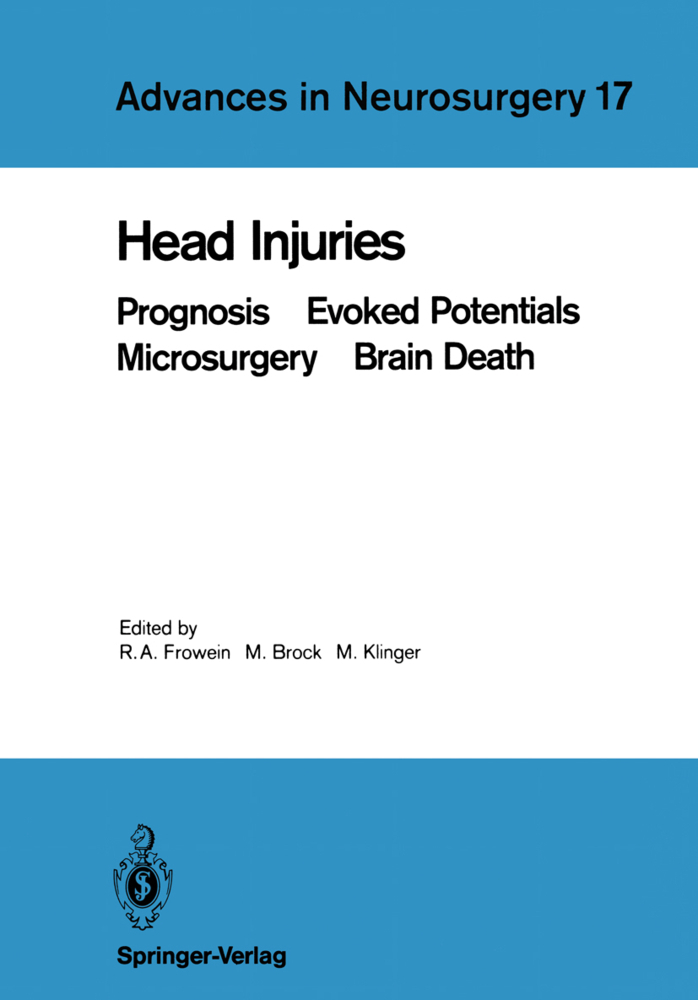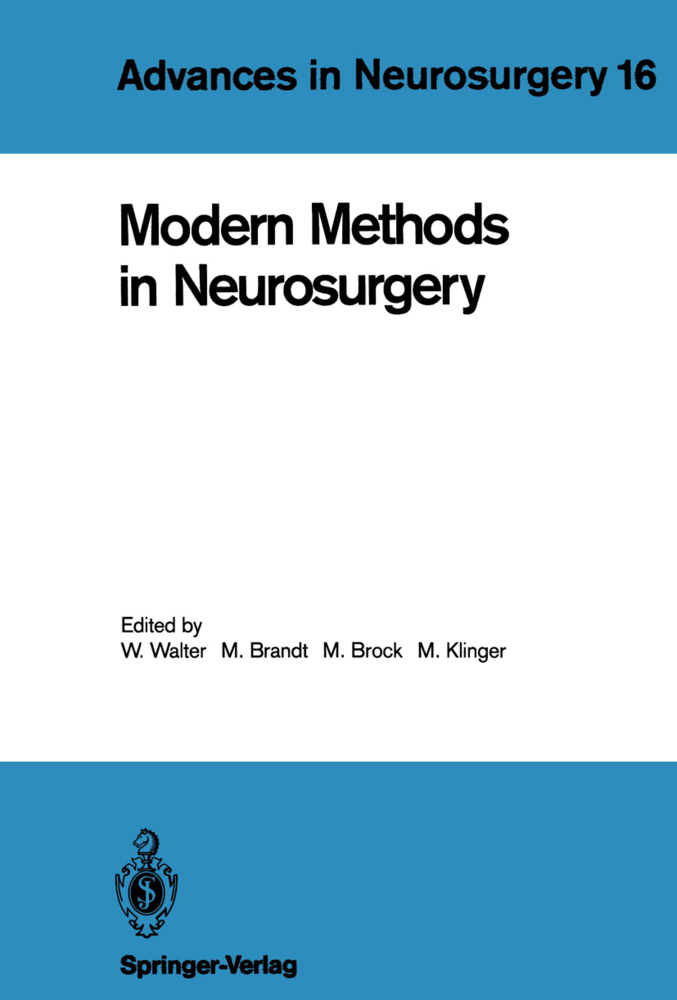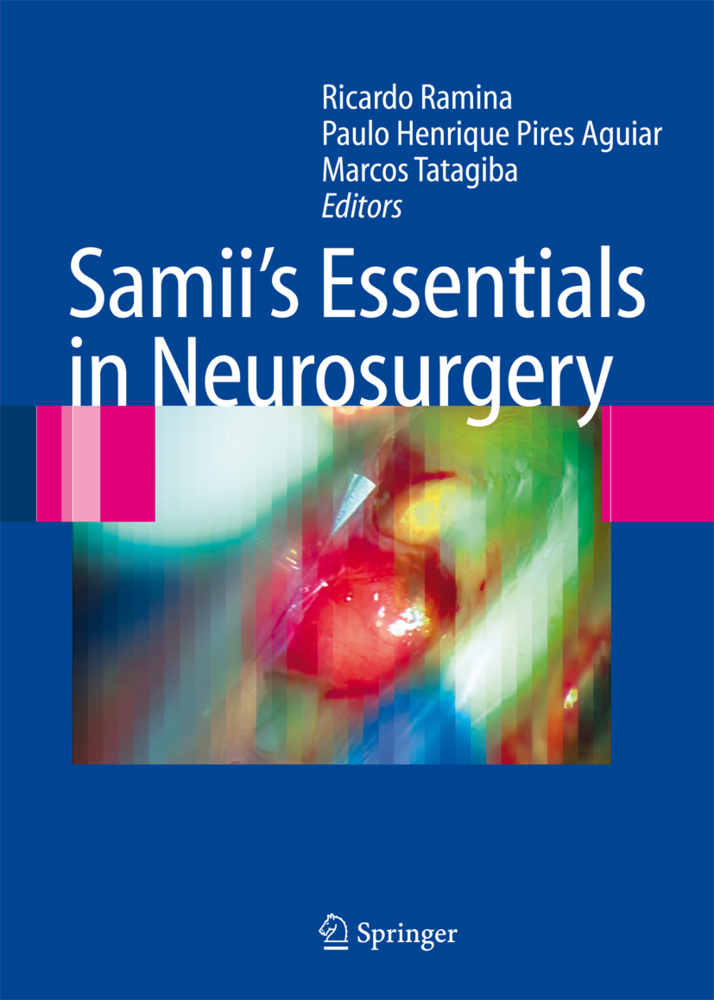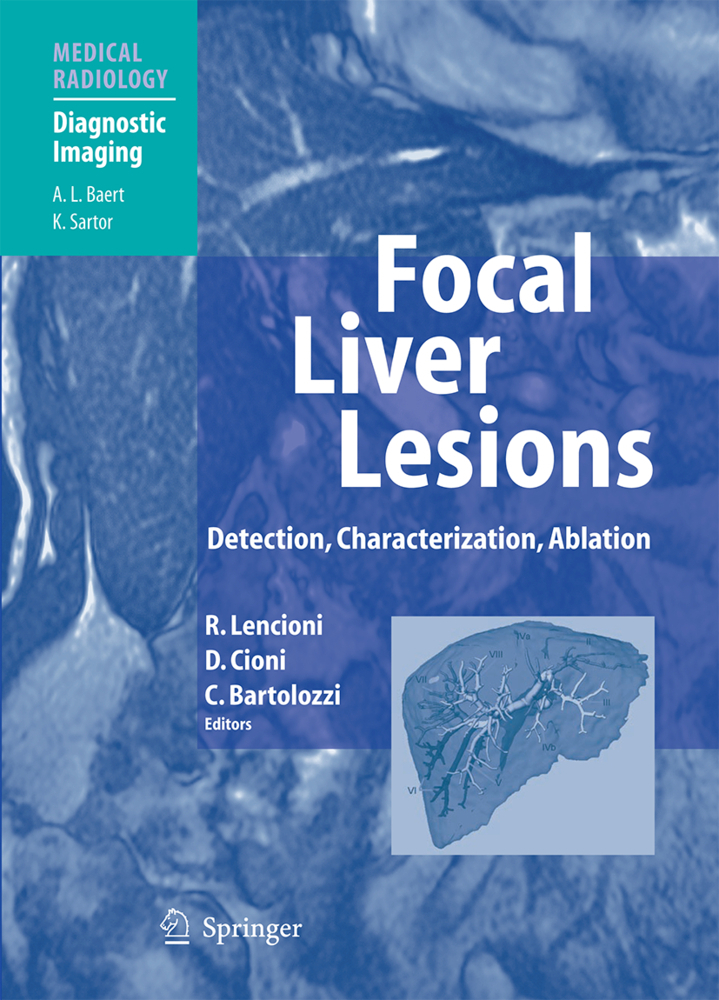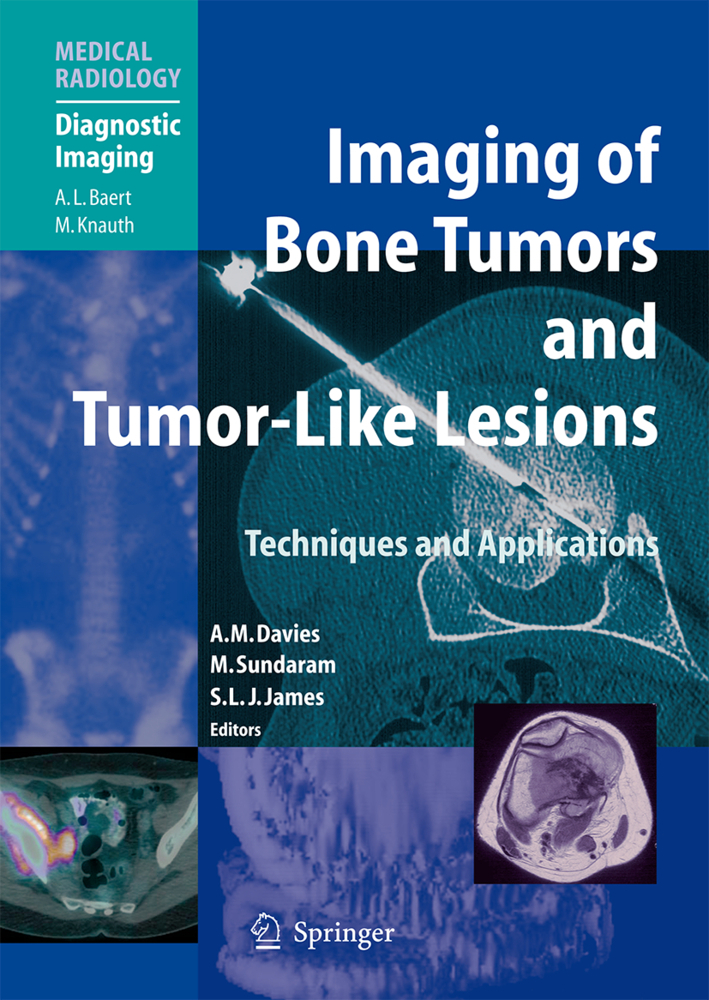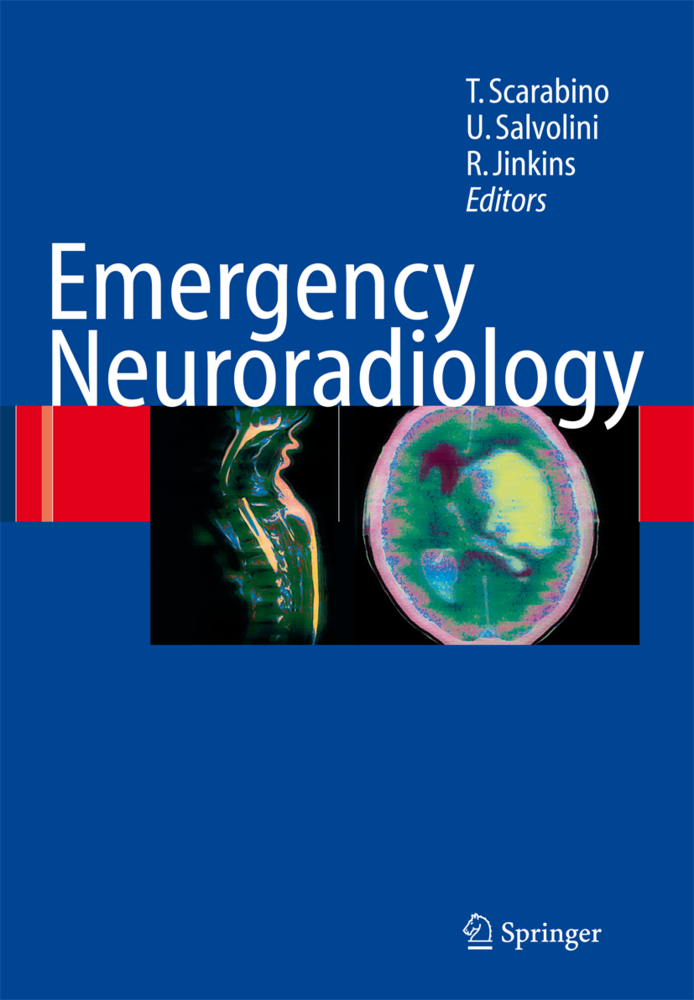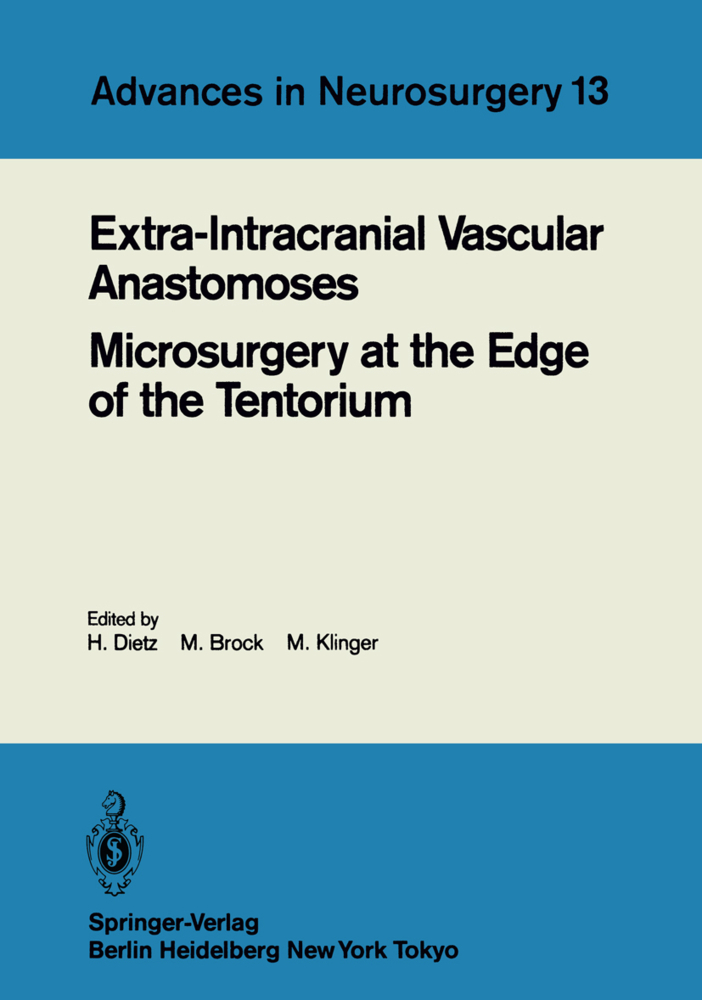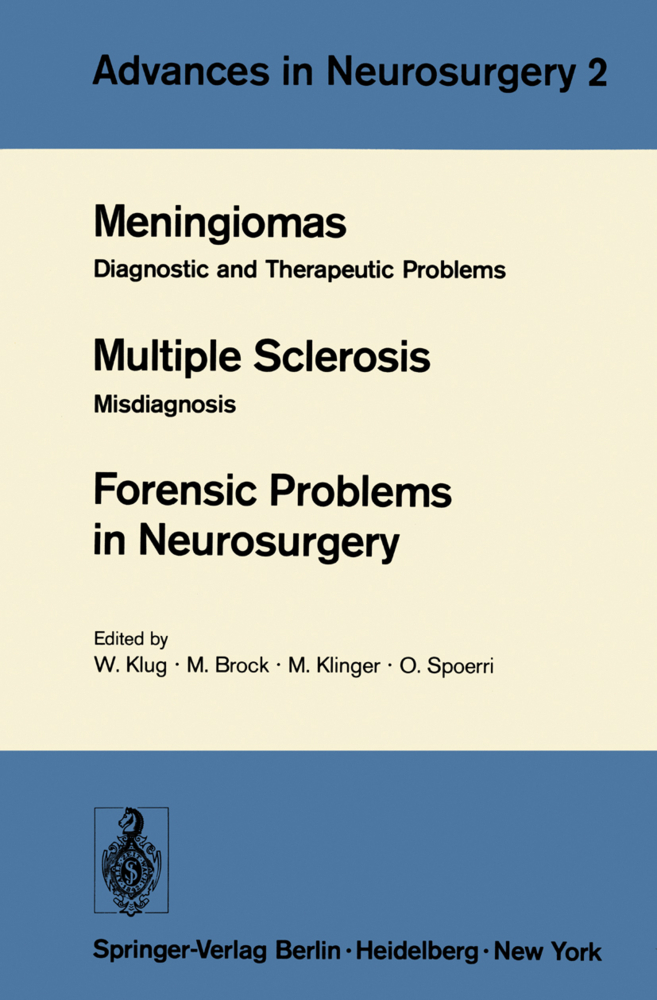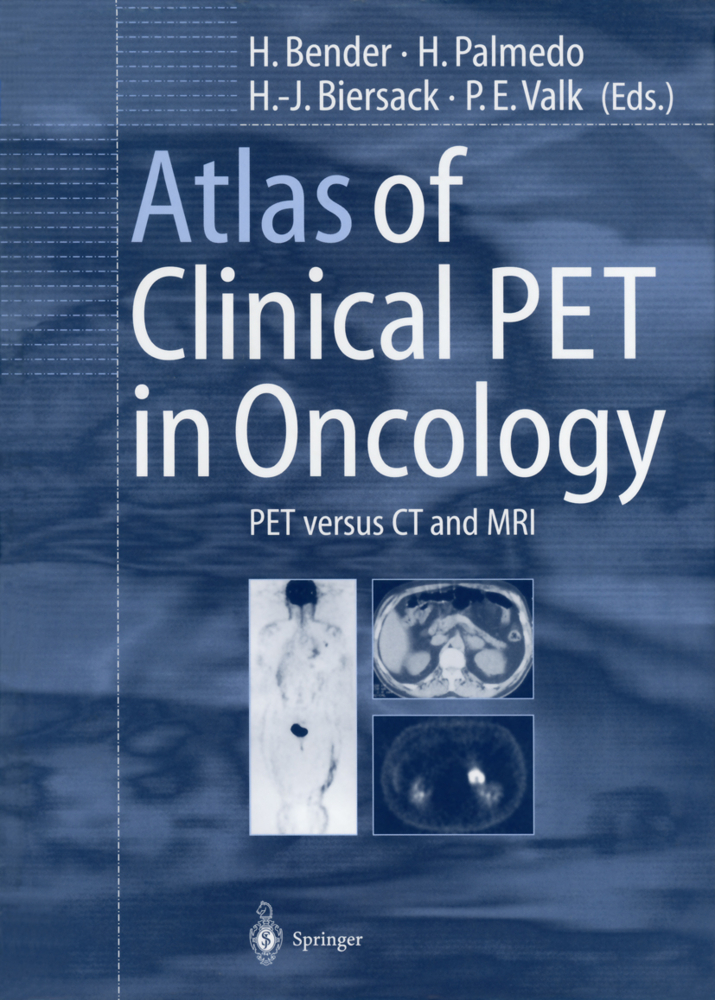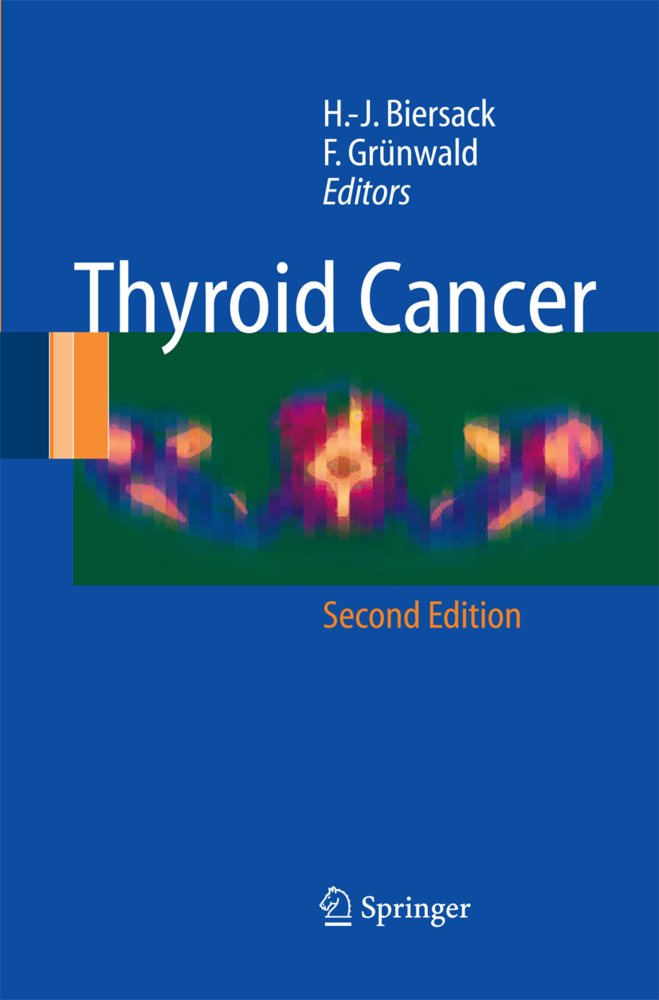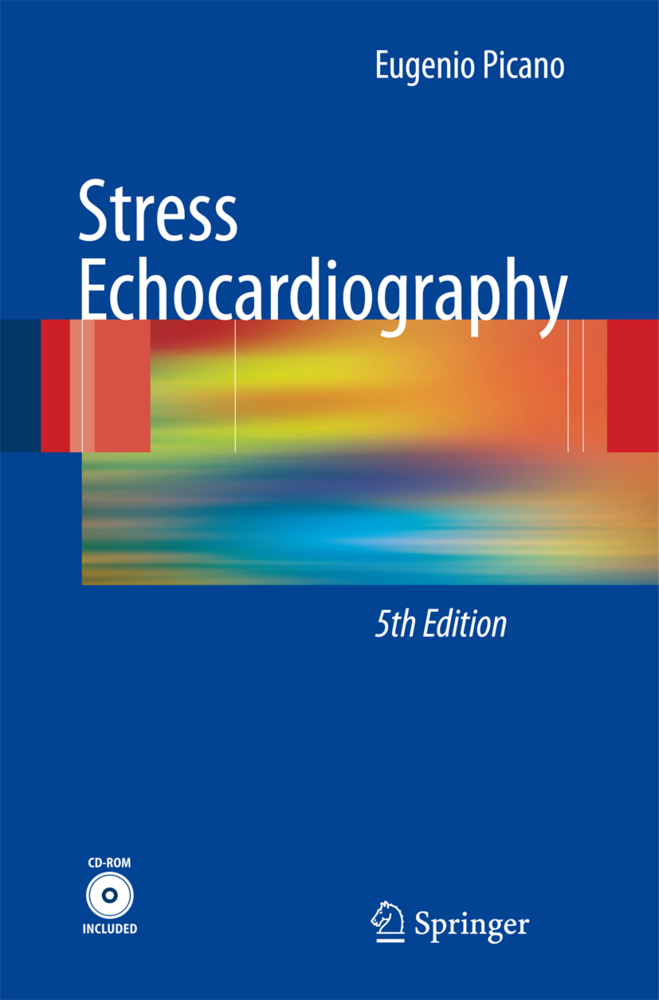Head Injuries
Prognosis Evoked Potentials Microsurgery Brain Death
Head Injuries
Prognosis Evoked Potentials Microsurgery Brain Death
The 17th volume of the "Advances in Neurosurgery" contains a selection of the scientific reports of the 39th annual meeting of the German Society for Neurosurgery, which was held in Cologne from May 8-11, 1988. The first section deals in particular with the long-term results of severe head injuries, as well as with problems of the acute traumatic hematomas and brain edema. The second section covers microsurgical experiences. Attention is focused on the anatomy and operative technique for lesions in and around the jugular foramen and the craniospinal transition. The third section describes the special new results of brain death determination. Beyond this, numerous contributions on clinical and research results were presented in a poster exhibition which was systematically studied in order to give younger neurosurgeons the opportunity for extensive discussion. The volume contains new information which will bring specialists up-to-date on the latest clinical and research developments in the field.
Long-Term Outcome After Severe Head Injury in Children and Young Adults
Outcome After Severe Head Injury with Midbrain Syndrome in the Acute Stage
Comparison of Magnetic Resonance Imaging, X-Ray Computed Tomography, Electroencephalography, and Long-Term Outcome After Head Injury: A Prospective Reexamination of 55 Patients
Longlasting Coma After Head Injury: Late Results
Traumatic Intracranial Hemorrhages in Elderly People
Outcome of Patients with an Acute Traumatic Sub- dural Hematoma
Acute Subdural Hematoma - An Unsolved Neuro- surgical Problem
Regeneration of Intellectual Functions Following Closed Brain Injury: Follow-up Study on a Pair of Twins Using the Co-twin as Control
The Influence of Independent Parameters on the Evaluation of Patients with Craniocerebral Trauma and Their Occupational Reintegration
Prognostic Parameters in Severe Head Injury: A Multivariate Analysis
Prognostic Value of Factors Affecting Outcome After Severe Head Injury
Organizational Model for the Diagnosis and Treatment of Skull and Brain Injuries at a Neuro- surgical Clinic with an Integrated Neororadio- logical Department
Frequency and Prognosis of Traumatic Brain Edema
ICP, nrCBF, and Contrast Scan for the Prognosis of Severe Head Injury
Head Injuries - Evoked Potentials
Value of Multimodality Evoked Potentials in the Diagnosis of Skull/Brain Injuries in Neuro- surgical Intensive Care Units
Somatosensory Evoked Potentials: Diagnostic and Prognostic Value in Head Injuries
Prognostic Significance of Somatosensory Evoked Potentials in Traumatic Brain Stem Lesions
On the Prognosis of Severe Head Injury Using Multimodal EvokedPotentials
Isolated Traumatic Lesions of Ventricular and Periventricular Regions and Cerebral Midline Structures: Outcome Prediction by CT Scan, Evoked Potentials, and ICP Monitoring
The Prognostic Importance of Somatosensory Evoked Potentials, Computed Tomography, and Clinical Findings in Severe Head Trauma
Microsurgery
Anatomy in and on the Jugular Foramen
Branchial Paragangliomas
Surgery of the Jugular Foramen
Microsurgical Approaches to the Cavernous Sinus
A Combined Transsylvian-Subtemporal Approach for Management of Tumors Located in the Cavernous Sinus and in Meckel's Cave
Microsurgical Resection of Tumors Involving the Cavernous Sinus: Possibilities and Limitations
Anesthesia-Independent Facial Nerve Monitoring with Orthodromic Intra/Extracranial Neurography
Clinical Subtyping of Trigeminal Neuralgia and Its Correlation to the Intraoperative Findings and Surgical Results Following Microvascular Decompression
Neurovascular Compression as a Cause of Essential Hypertension: A Microanatomical Study
Essential Hypertension in Patients with Hemi- facial Spasm or Trigeminal Neuralgia
Neurosurgical Topography of the Pyramidal Tract
Postoperative Mortality in the Era of Microneu- rosurgery
Incidence, Management, and Outcome of Patients with Premature Rupture of Cerebral Aneurysms During Surgery
Temporary Vessel Occlusion by Microvascular Clips
Aneurysmal Location and Operative Timing
Ventral Transvertebral Intradural Approach in Cervical and Thoracic Lesions
Lateral Approach for Resection of Anterior Craniospinal Tumors-
Brain Death
Diagnosis of Brain Death
Differentiated Diagnostic Measurements in Determining Brain Death in Clinical Practice
Neurosurgical Diagnosis of Brain Death in the Peripheral Hospital PrecedingMultiorgan Donation
Experience with Determination of Brain Death and Organ Donation
On Problems in the Determination of Brain Death
Latency of Recovery and Electrical Silence of Auditory Evoked Potentials and the Electro- corticogram After Peracute Complete Brain Ischemia of 2-30 Minutes' Duration
Methodological and Technical Problems in the Confirmation of Brain Death by Evoked Potentials
Nasopharyngeal Recording of Subcortical Somatosensory Evoked Potentials in Brain Death
Is the Loss of Evoked Potentials and Brain Stem Reflexes as Investigated Electrophysiologically Proof of Brain Death?
Multimodality Evoked Potentials in the Diagnosis of Brain Death
The Value of Motor Potentials Following Trans- cortical Stimulation in Diagnosing Brain Death - First Results
Motor-Evoked Potentials and Transcranial Doppler Sonography During Development of Cerebral Circulatory Arrest
Neuropathology of Brain Death in Relation to Continuously Measured Intracranial Pressure
The Use of Transcranial Doppler Ultrasound Monitoring in the Determination of Brain Death
Comparative Evaluation of Angiography and Transcranial Doppler Sonography in the Determination of Intracranial Circulatory Arrest
Hemodynamics of Cerebral Circulatory Arrest: Correlation Between Perfusion Pressure and Blood Flow Velocity
Comparison of Transcranial Doppler Sonography and Cerebral Angiography for the Diagnosis of Cerebral Circulatory Arrest
Electrographic Changes in Brain-Dead Patients
Brain Death in Fulminant Hepatic Failure
Ethical and Legal Aspects of the Diagnosis of Cerebral Death in the GDR
Brain Death Diagnosis in Anencephalics?
New Research
Monitoring of Hemodynamics in Subarachnoid Hemorrhage Using Transcranial Doppler and Laser Doppler
Cerebral Blood FlowMeasurements with 99mTc-HMPAO and 123I-Amphetamine (HIPDM) in Patients with Cerebral Tumors (1)
CSF Flow Visualization by Magnetic Resonance Imaging Techniques - Methods and Clinical Examples
Intracranial Complications After Anticoagulant Therapy.
The Development of Orbital Surgery from a Neuro surgeon 's Viewpoint
Head Injuries - Long-Term Results - PrognosisLong-Term Outcome After Severe Head Injury in Children and Young Adults
Outcome After Severe Head Injury with Midbrain Syndrome in the Acute Stage
Comparison of Magnetic Resonance Imaging, X-Ray Computed Tomography, Electroencephalography, and Long-Term Outcome After Head Injury: A Prospective Reexamination of 55 Patients
Longlasting Coma After Head Injury: Late Results
Traumatic Intracranial Hemorrhages in Elderly People
Outcome of Patients with an Acute Traumatic Sub- dural Hematoma
Acute Subdural Hematoma - An Unsolved Neuro- surgical Problem
Regeneration of Intellectual Functions Following Closed Brain Injury: Follow-up Study on a Pair of Twins Using the Co-twin as Control
The Influence of Independent Parameters on the Evaluation of Patients with Craniocerebral Trauma and Their Occupational Reintegration
Prognostic Parameters in Severe Head Injury: A Multivariate Analysis
Prognostic Value of Factors Affecting Outcome After Severe Head Injury
Organizational Model for the Diagnosis and Treatment of Skull and Brain Injuries at a Neuro- surgical Clinic with an Integrated Neororadio- logical Department
Frequency and Prognosis of Traumatic Brain Edema
ICP, nrCBF, and Contrast Scan for the Prognosis of Severe Head Injury
Head Injuries - Evoked Potentials
Value of Multimodality Evoked Potentials in the Diagnosis of Skull/Brain Injuries in Neuro- surgical Intensive Care Units
Somatosensory Evoked Potentials: Diagnostic and Prognostic Value in Head Injuries
Prognostic Significance of Somatosensory Evoked Potentials in Traumatic Brain Stem Lesions
On the Prognosis of Severe Head Injury Using Multimodal EvokedPotentials
Isolated Traumatic Lesions of Ventricular and Periventricular Regions and Cerebral Midline Structures: Outcome Prediction by CT Scan, Evoked Potentials, and ICP Monitoring
The Prognostic Importance of Somatosensory Evoked Potentials, Computed Tomography, and Clinical Findings in Severe Head Trauma
Microsurgery
Anatomy in and on the Jugular Foramen
Branchial Paragangliomas
Surgery of the Jugular Foramen
Microsurgical Approaches to the Cavernous Sinus
A Combined Transsylvian-Subtemporal Approach for Management of Tumors Located in the Cavernous Sinus and in Meckel's Cave
Microsurgical Resection of Tumors Involving the Cavernous Sinus: Possibilities and Limitations
Anesthesia-Independent Facial Nerve Monitoring with Orthodromic Intra/Extracranial Neurography
Clinical Subtyping of Trigeminal Neuralgia and Its Correlation to the Intraoperative Findings and Surgical Results Following Microvascular Decompression
Neurovascular Compression as a Cause of Essential Hypertension: A Microanatomical Study
Essential Hypertension in Patients with Hemi- facial Spasm or Trigeminal Neuralgia
Neurosurgical Topography of the Pyramidal Tract
Postoperative Mortality in the Era of Microneu- rosurgery
Incidence, Management, and Outcome of Patients with Premature Rupture of Cerebral Aneurysms During Surgery
Temporary Vessel Occlusion by Microvascular Clips
Aneurysmal Location and Operative Timing
Ventral Transvertebral Intradural Approach in Cervical and Thoracic Lesions
Lateral Approach for Resection of Anterior Craniospinal Tumors-
Brain Death
Diagnosis of Brain Death
Differentiated Diagnostic Measurements in Determining Brain Death in Clinical Practice
Neurosurgical Diagnosis of Brain Death in the Peripheral Hospital PrecedingMultiorgan Donation
Experience with Determination of Brain Death and Organ Donation
On Problems in the Determination of Brain Death
Latency of Recovery and Electrical Silence of Auditory Evoked Potentials and the Electro- corticogram After Peracute Complete Brain Ischemia of 2-30 Minutes' Duration
Methodological and Technical Problems in the Confirmation of Brain Death by Evoked Potentials
Nasopharyngeal Recording of Subcortical Somatosensory Evoked Potentials in Brain Death
Is the Loss of Evoked Potentials and Brain Stem Reflexes as Investigated Electrophysiologically Proof of Brain Death?
Multimodality Evoked Potentials in the Diagnosis of Brain Death
The Value of Motor Potentials Following Trans- cortical Stimulation in Diagnosing Brain Death - First Results
Motor-Evoked Potentials and Transcranial Doppler Sonography During Development of Cerebral Circulatory Arrest
Neuropathology of Brain Death in Relation to Continuously Measured Intracranial Pressure
The Use of Transcranial Doppler Ultrasound Monitoring in the Determination of Brain Death
Comparative Evaluation of Angiography and Transcranial Doppler Sonography in the Determination of Intracranial Circulatory Arrest
Hemodynamics of Cerebral Circulatory Arrest: Correlation Between Perfusion Pressure and Blood Flow Velocity
Comparison of Transcranial Doppler Sonography and Cerebral Angiography for the Diagnosis of Cerebral Circulatory Arrest
Electrographic Changes in Brain-Dead Patients
Brain Death in Fulminant Hepatic Failure
Ethical and Legal Aspects of the Diagnosis of Cerebral Death in the GDR
Brain Death Diagnosis in Anencephalics?
New Research
Monitoring of Hemodynamics in Subarachnoid Hemorrhage Using Transcranial Doppler and Laser Doppler
Cerebral Blood FlowMeasurements with 99mTc-HMPAO and 123I-Amphetamine (HIPDM) in Patients with Cerebral Tumors (1)
CSF Flow Visualization by Magnetic Resonance Imaging Techniques - Methods and Clinical Examples
Intracranial Complications After Anticoagulant Therapy.
Frowein, Reinhold A.
Brock, Mario
Klinger, Margareta
| ISBN | 978-3-540-50550-1 |
|---|---|
| Artikelnummer | 9783540505501 |
| Medientyp | Buch |
| Copyrightjahr | 1989 |
| Verlag | Springer, Berlin |
| Umfang | XIV, 369 Seiten |
| Abbildungen | XIV, 369 p. 90 illus. |
| Sprache | Englisch |

